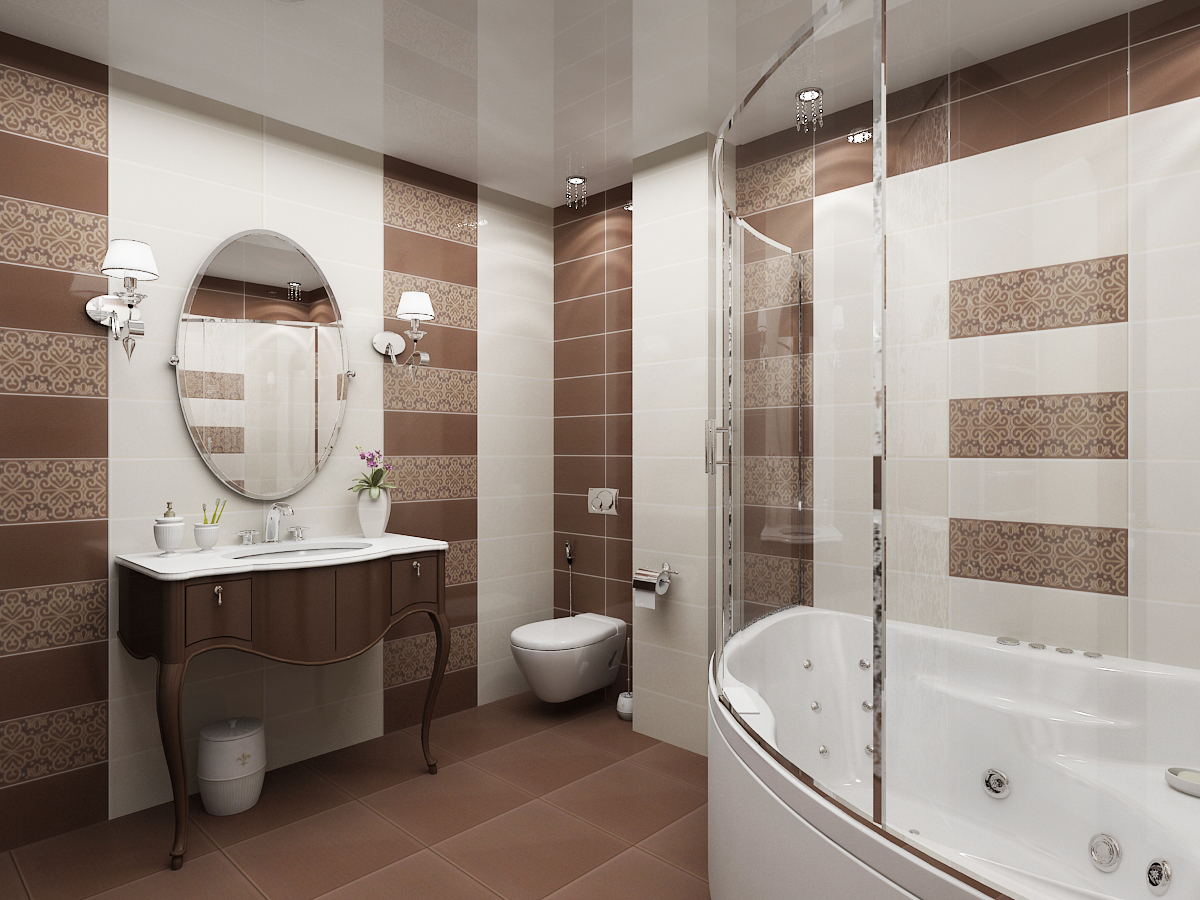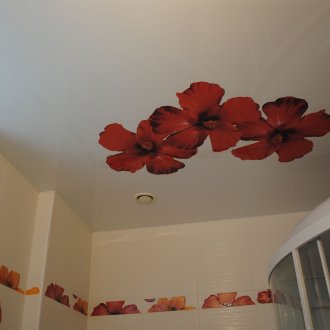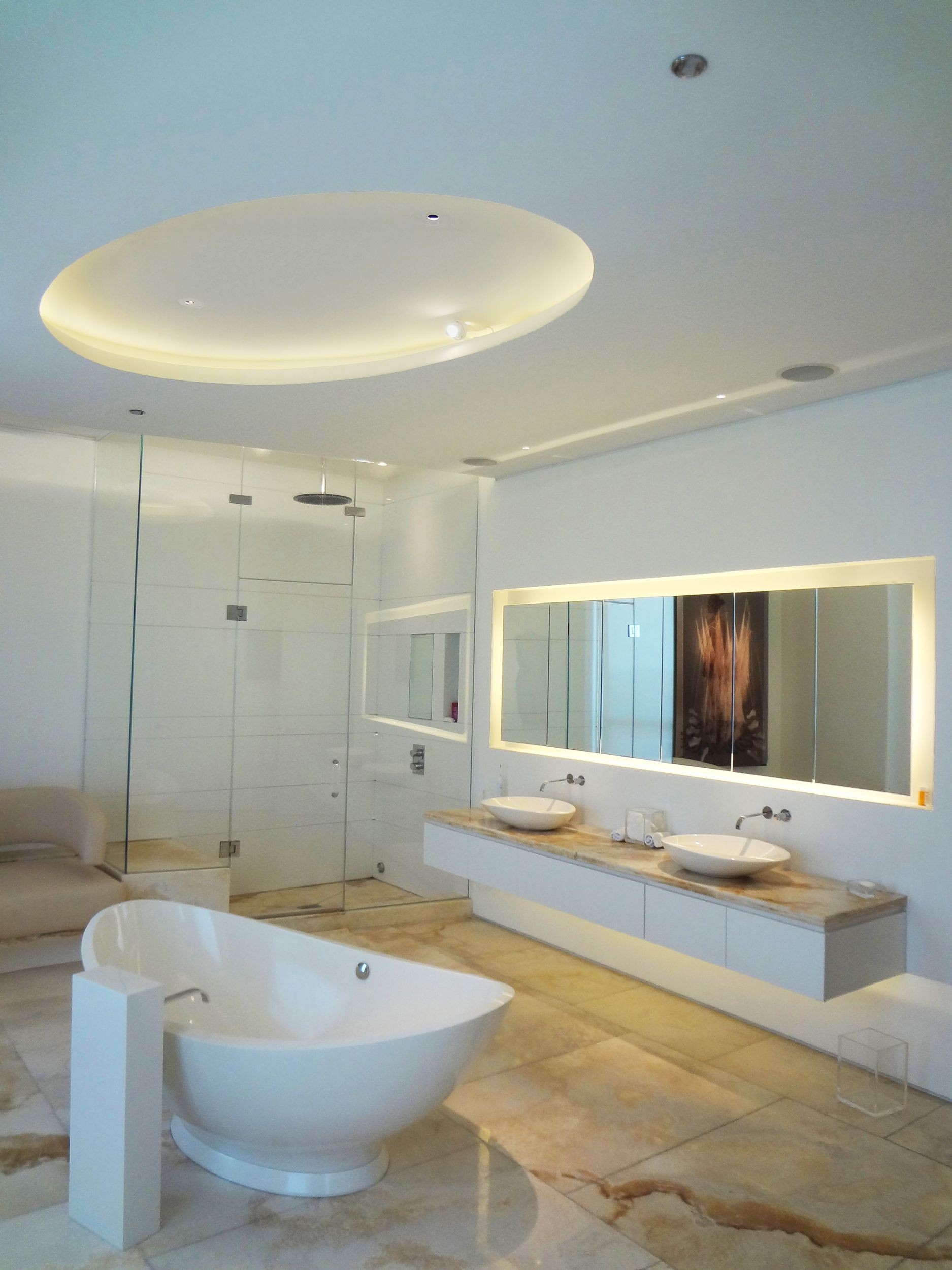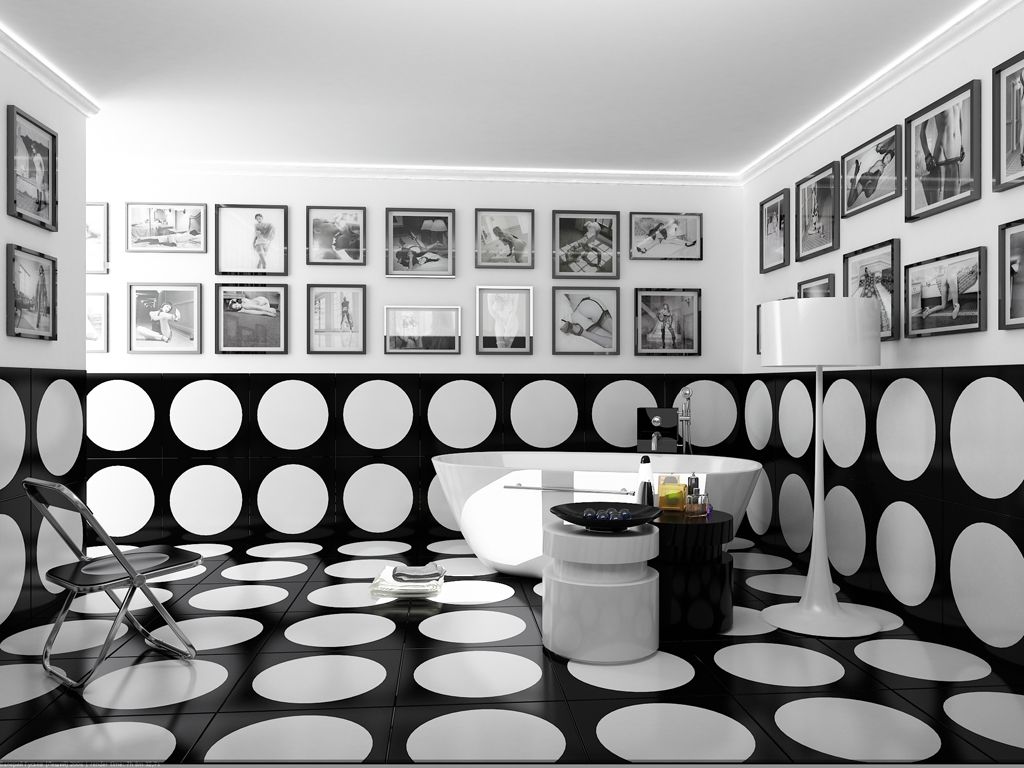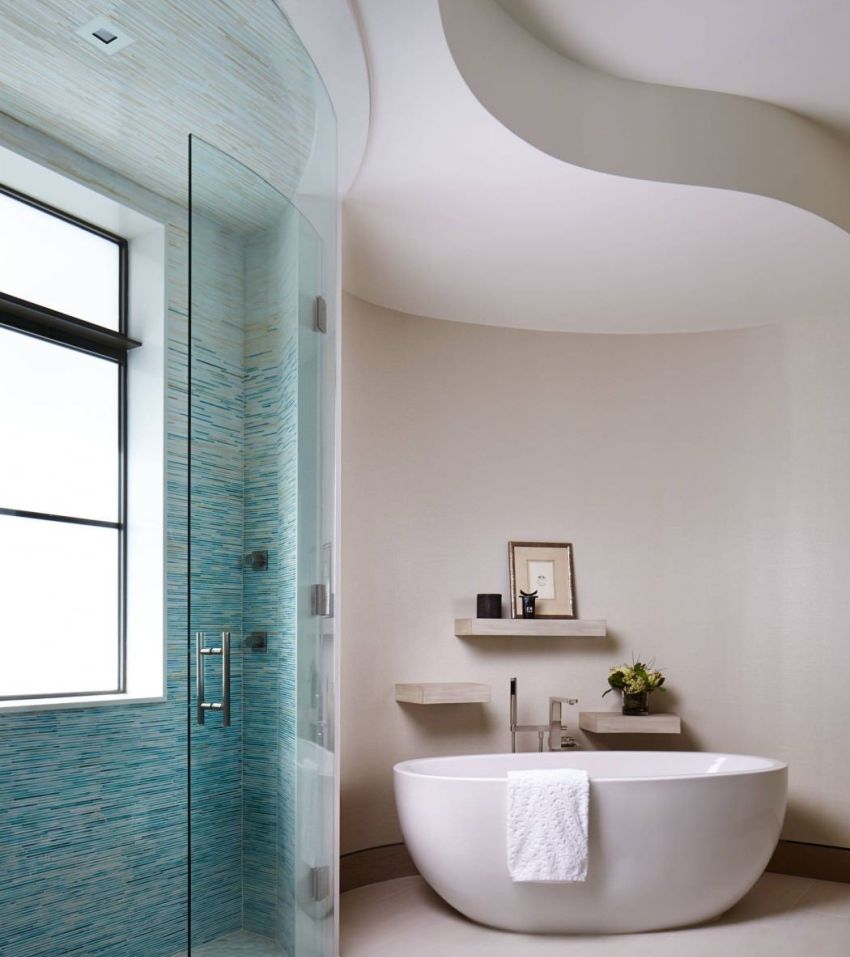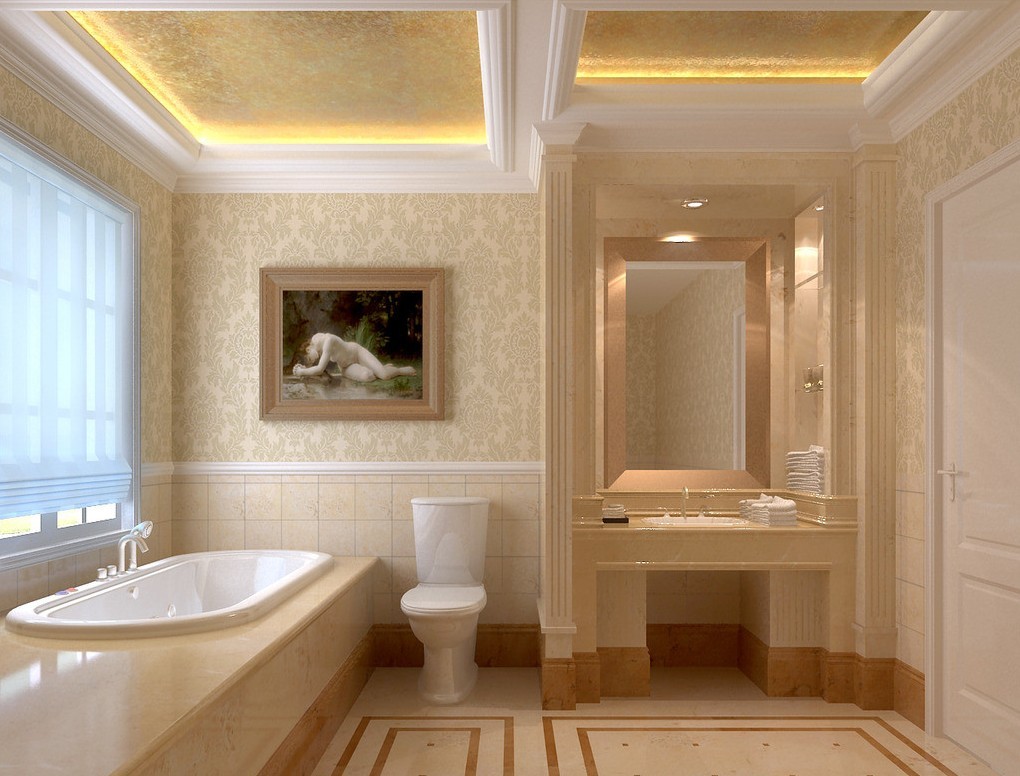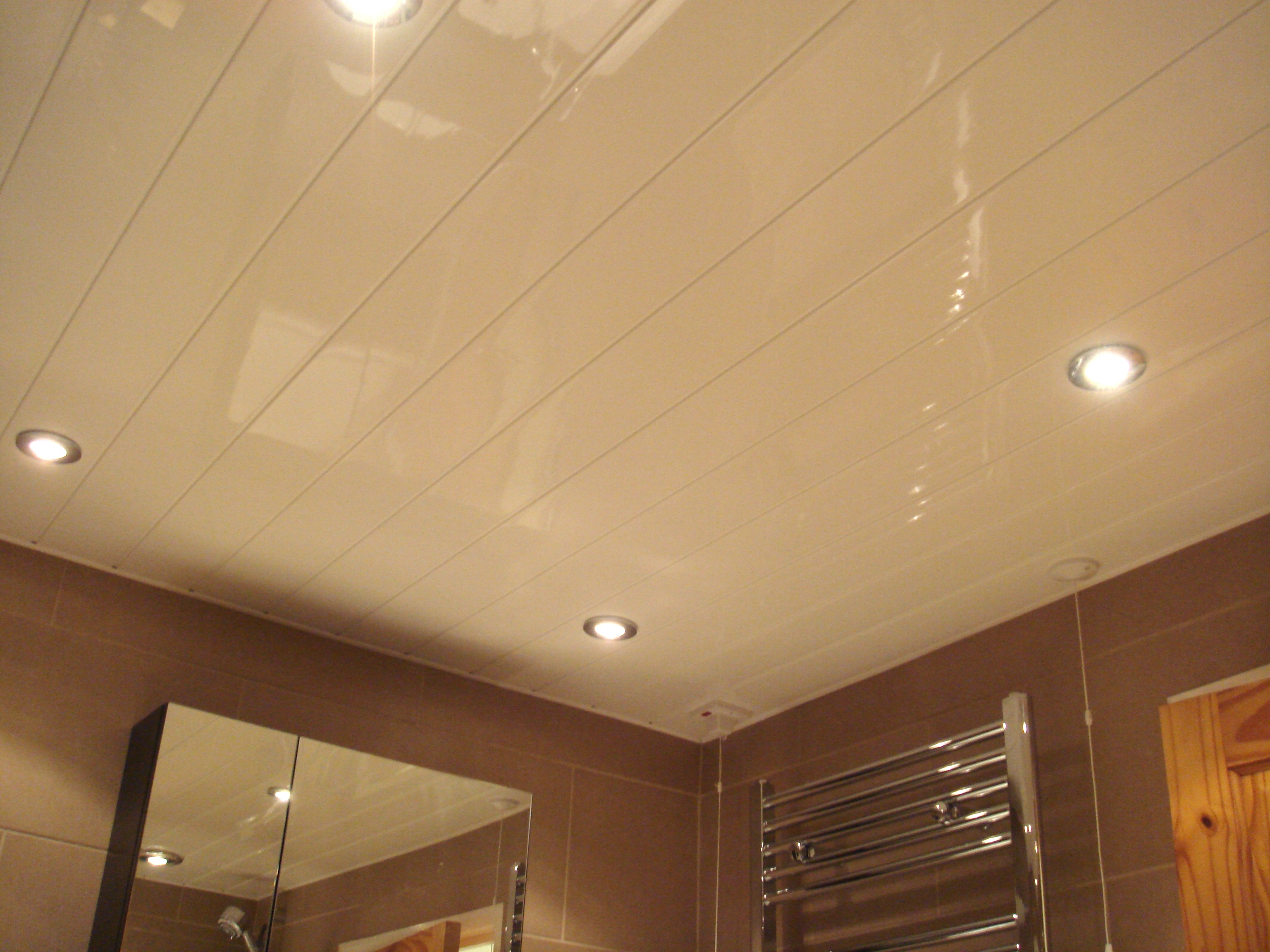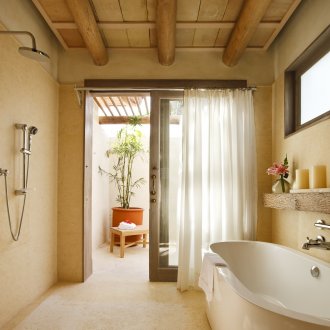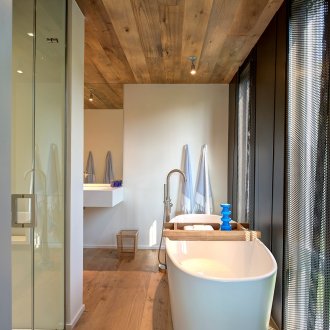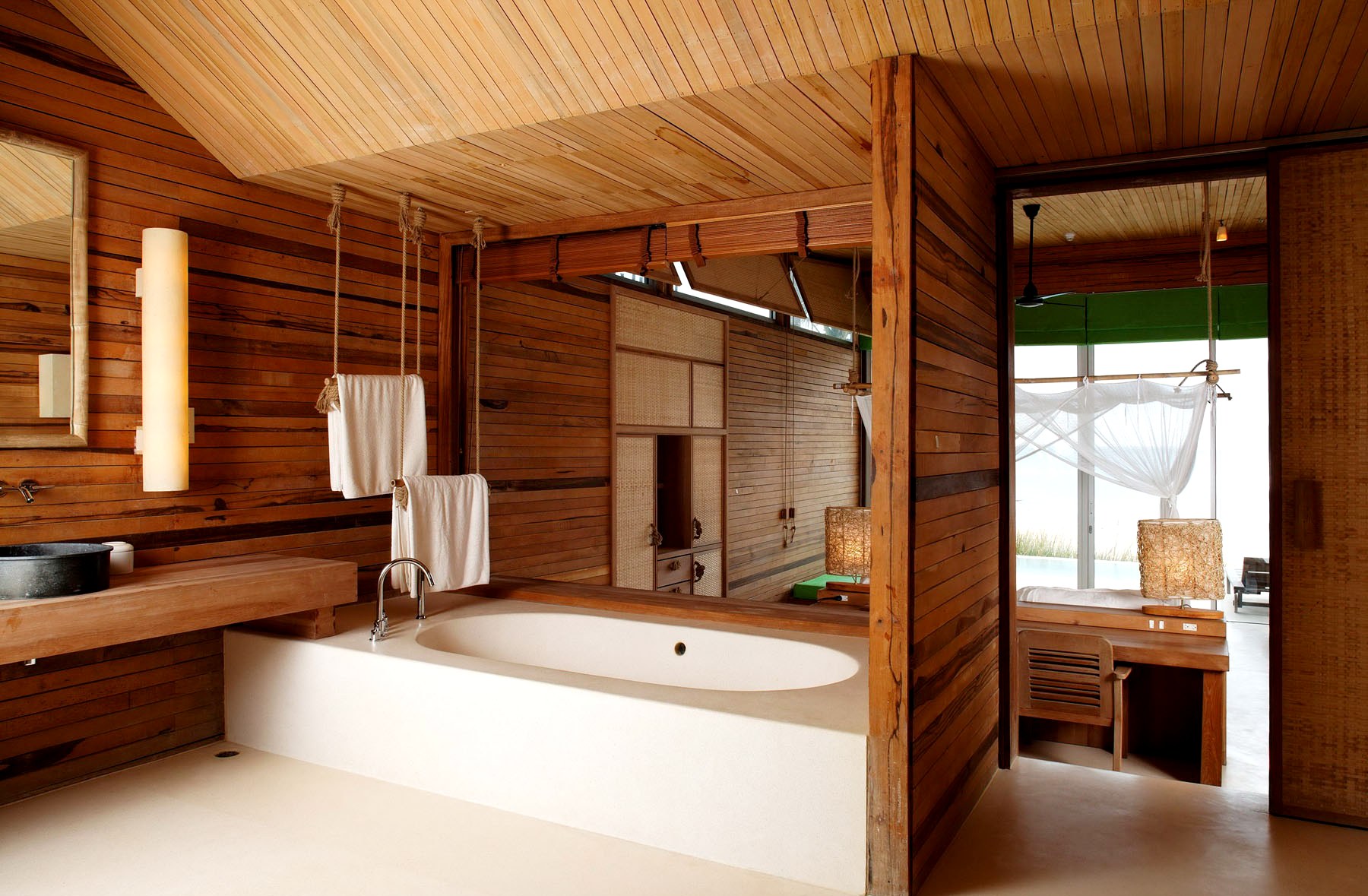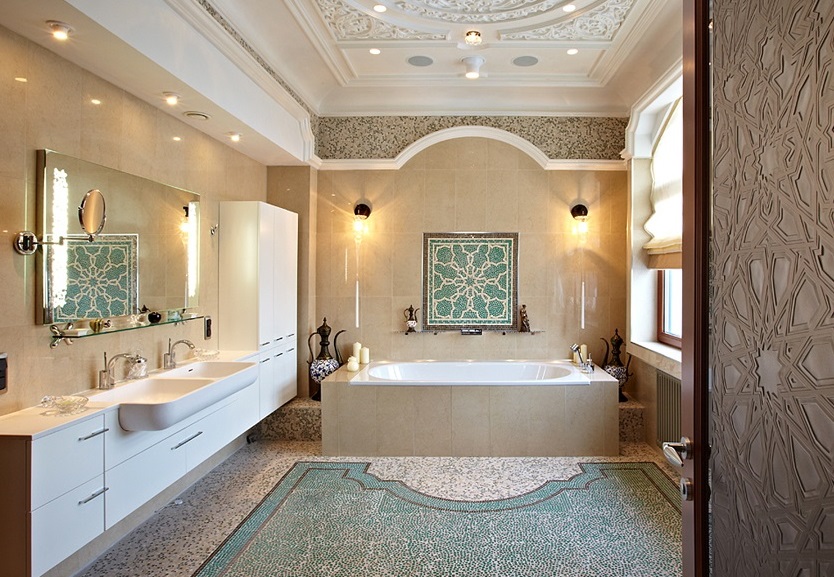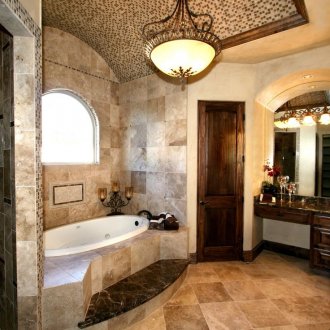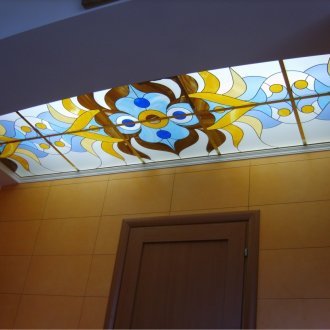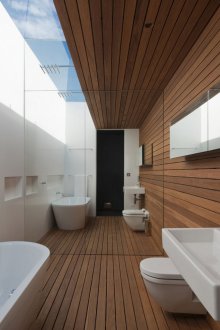Ceiling design in the bathroom (20 photos)
Gone are the days when the repair of the premises was carried out to a greater extent to maintain cleanliness. Today, the word “repair” has become almost synonymous with the words “design upgrade”.
Every detail is important in the decoration of a modern room - special attention is paid to floor coverings, wall decoration, and, of course, the ceiling. It would seem that the repair of the ceiling should be the easiest part of the decoration of the room, but often this is not so. The design of the ceilings in the bathroom has a number of features due to increased humidity and a tendency to develop mold and various fungi. When choosing the design of ceilings in the bathroom, it is necessary to remember not only the beauty of the room, but also its functionality. There are a number of factors that influence the choice of design for a bathroom ceiling.
Factors affecting the choice of ceiling for the bathroom:
- The condition of the room.
- The alleged design of the bathroom. On the Internet, you can find a lot of photo and video reports of designers, as well as bathroom projects for every taste and wealth, so finding the right ideas for repairs is easy.
- Repair budget. The economic factor is one of the main ones during the repair. It depends on the availability of funds whether there will be a banal whitewash or gilded marble on the ceiling in the bathroom.
- Ventilation device and floor space. In a small bathroom, the percentage of moisture during the adoption of water procedures will be significantly higher than in a large bathroom. An important role is played by the quality of the hood and the moisture resistance of the finishing materials. For a small bathroom, a rack ceiling with a metal base, a plastic or stretch ceiling made of PVC can be a good solution, but wooden, stretch, fabric or painted ceilings with poor ventilation can quickly deteriorate;
- The height of the room. For a room with a small wall height, it is better not to use suspended or suspended ceilings, because the frame structure will "steal" a few more centimeters of space. Those who have a bathroom with high ceilings can use various, even combined, options. For example, textured materials: tiles or multi-level drywall constructions. The combination of colors on the bathroom ceiling will also be appropriate only in a room with high ceilings.
The modern market is replete with a variety of materials and turnkey solutions for the ceiling. The problem remains only in choosing the best design solution, and for this you need to weigh the pros and cons of each type of coating.
Stretch ceiling
A major advantage of suspended ceilings for the bathroom is their complete water resistance. Such ceilings are made of PVC film, so they are not afraid of even direct leaks from unscrupulous neighbors. An additional plus of the stretch ceiling is immunity to mold and fungi. Design solutions for suspended ceilings allow you to choose the right material even for the most exotic requests.
Stretch ceiling in the bathroom today is one of the most relevant types of ceiling finishes.
The perfectly smooth, even, glossy or matte surface of the stretch ceiling ennobles the room, and the use of reflective material in the design of the ceiling can visually adjust the space.Traditionally, the ceiling of the bathroom has a white or light surface, but recently bathrooms with a blue or even black ceiling have been popular. The ceiling in the bathroom, complemented by the decor in tone, becomes the “highlight” of the entire interior.
Painted ceilings
Painting the ceiling in the bathroom is a budget finish. Designers are very fond of painted ceilings for their versatility - such a ceiling will fit into any interior, it can be supplemented with furniture and decor in any style you like.
If only a team of professionals can cope with the installation of a stretch ceiling, then even an inexperienced master can paint the ceiling in the bathroom. The only caveat - the paint for the ceiling in the bathroom should be moisture resistant.
Paint on the ceiling is applied by spray or roller. With self-painting the ceiling in the bathroom, the main thing is a quality surface preparation. That is, before painting, the ceiling must be cleaned, primed and puttyed before applying the first coat of paint. The life of the painted ceiling in the bathroom is about 10 years.
False Bathroom Ceilings
Beautiful ceilings are made from suspended materials. They have their own advantages: suspended ceilings are easy to install and maintain, the surface under them practically does not need to be prepared. The design of suspended ceilings is simple and concise if the ceiling is single-level. However, there are multi-level ceilings made of drywall or plastic - they look elaborate and attract a lot of attention. The main advantage of any suspended structure is to hide engineering communications and level the surface of the ceiling.
A separate place in the category of suspended ceilings is occupied by slatted false ceilings for the bathroom. Such ceilings consist of an aluminum frame and battens that snap into this frame. The design of the slatted ceilings in the bathroom is truly universal and fits with most popular style solutions for the bathroom. It is also important that the rack ceiling can be in a room with high humidity for a long time, without losing its performance.
One of the modern design solutions for the bathroom ceiling is Armstrong type ceilings. They are a suspension system of mineral fiber boards. This is a good solution for rooms in which you need to strengthen the acoustic component, there are among such ceilings and waterproof models.
Original bathroom ceiling
Interesting design solutions for the bathroom can be achieved using non-standard finishing materials. These include: wood, painting, stained glass, mirrors.
The wooden ceiling in the bathroom is a bright but unpopular solution. It is advisable to use a wooden ceiling finish only if the bathroom is very spacious with a powerful hood.
The wooden finish in the interior of the bathroom looks luxurious, but it requires surface preparation and the use of special moisture-resistant panels made of treated wood.
The painting guarantees the uniqueness of the ceiling in the bathroom, but creating such a ceiling is fraught with some difficulties. High-quality painting will require not only proper surface preparation, but also artistic talent. To paint the ceiling, you can use acrylic paints, and then cover the picture with a special film.
Stained glass components allow you to get a beautiful and durable ceiling, even in a very small bathroom. Stained-glass windows have one minus - high cost, but the market offers a wide selection of analogs from plexiglass. Stained glass is used as an independent version of the ceiling and as an addition to tiles, panels or drywall. Stained-glass windows in combination with hidden lighting allow you to create unique design solutions for the bathroom.
Mirrored ceilings can not be attributed to the budget options for design, but they look impressive.Mirror cloth, which is used to decorate the ceiling in the bathroom, retains its properties for a long time even in a humid room. However, with the frame fastening of such a fabric, the joints must be carefully sealed to prevent moisture from entering under the fabric.
